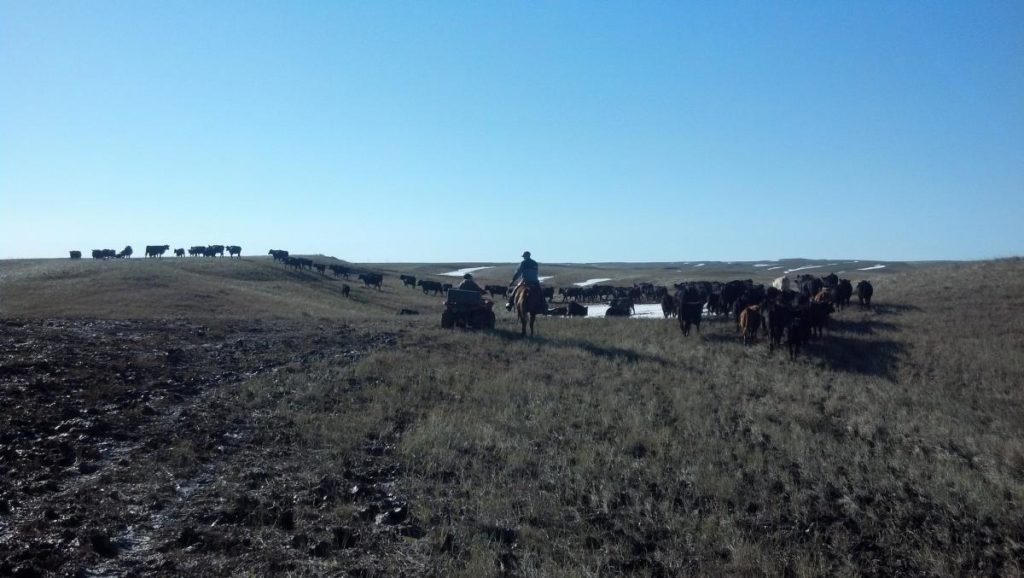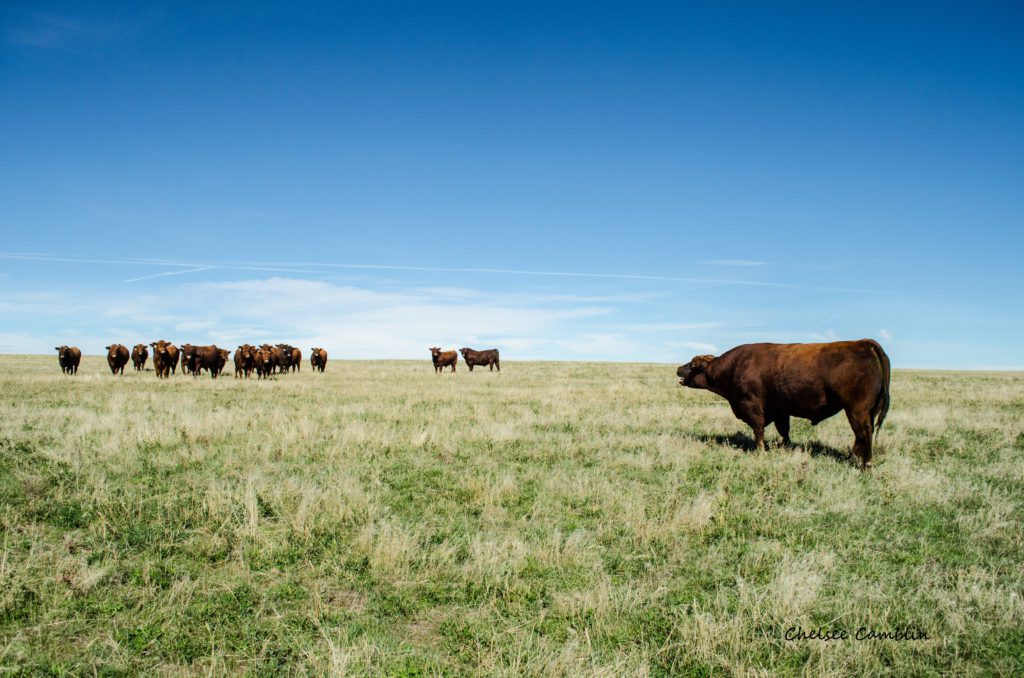Possible Causes
It is often difficult to pinpoint exactly what went wrong when abortions occur. All livestock producers expect a certain degree of late-term abortions or stillbirths. It is generally accepted that any cattle operation will have 1-2% of “normal” pregnancy loss after a month or two of gestation. With spring calving herds, January and February are when many abortion cases are submitted to the SDSU Veterinary Diagnostic Laboratory. In about half of the cases submitted to the SDSU Diagnostic lab, no abnormalities are detected (Table 1). There are many reasons for this, such as that the infectious agents are often not detectable anymore by the time the fetus is expelled, or stillborn calves were aborted due to abnormal presentation or twin pregnancies.
In the rest of the cases, something abnormal is found (Table 1). A frequent finding is inflammation in the placenta that may or may not be traced to a specific germ. The placenta in a pregnant animal is the gateway from the mother’s blood supply (carrying nutrients and oxygen, but possibly bacteria and viruses) to the fetus. If something affects that critical tissue, then the fetus may become starved from oxygen and die. When germs are found, they are often more environmental than contagious in nature, and very few cows experience problems. Lastly, sometimes infectious agents such as IBR, BVD, or leptospirosis are identified, for which effective vaccines are available.
| Cause | No. | % of total |
|---|---|---|
| Idiopathic (no diagnosis) | 1,996 | 54% |
| Non-Specific Placentitis | 1,007 | 27% |
| T. pyogenes (pus-forming non-contagious bacteria) | 216 | 6% |
| Fungal – Mycotic | 122 | 3% |
| Non-specific Bacteria | 118 | 3% |
| IBR Virus | 90 | 2% |
| Neospora | 64 | 2% |
| Other | 105 | 3% |
| TOTAL | 3718 | 100% |
Abortion Diagnosis
So, what should a cattle producer do when a late-term abortion is encountered? Start with your local veterinarian to discuss the details of your issue and whether there are similar problems in other neighboring herds. When the number of abortions in a group exceeds one or two, it’s generally time to get a diagnosis.
SAMPLE SUBMISSION
Diagnostic success can be improved by promptly submitting the proper samples. While the following recommendations are likely sufficient for most veterinary diagnostic laboratories, your veterinarian should confirm these with their particular lab. When possible, the entire fetus and placenta – chilled but not frozen – is the most desirable specimen. The placenta is of particular importance and should be included whenever possible. Significant microscopic changes and germ identification often stem from examining the placenta. If not possible to submit the whole fetus, heart, lung, liver, kidney, spleen, brain, skeletal muscle (tongue or diaphragm), fetal stomach fluid and fetal thoracic fluid or heart blood should be sent. Veterinarians are well-versed at sample collection and submission. It’s important to discuss with the veterinarian information pertinent to the herd and its losses so that can be shared with the laboratory as well.
This information includes:
- Number of animals in the herd, including recent purchases or movements
- Number of abortions and previous diagnoses, if any
- Age and breed of dams
- Gestational age of abortions
- Pertinent treatment or vaccinations
USING RESULTS
Based on the results, your veterinarian will follow up and advise you on potential herd management changes. If an environmental cause such as mold is identified, examining feed sources will help determine what feeds are contaminated. In addition, if infectious agents are found, implementing a sound pre-breeding vaccination program for next year’s heifers is a must, Cow vaccine boosters to prevent early and late term abortions should also be considered.
The Bottom Line
With reproduction, focusing on what we can control and diagnose is the key to helping avoid these losses within our herd.
Source: Russ Daly – Professor, SDSU Extension Veterinarian, State Public Health Veterinarian. Written collaboratively by Russ Daly and Taylor Grussing, former SDSU Extension Cow-Calf Field Specialist.
Photo: Courtesy USDA








